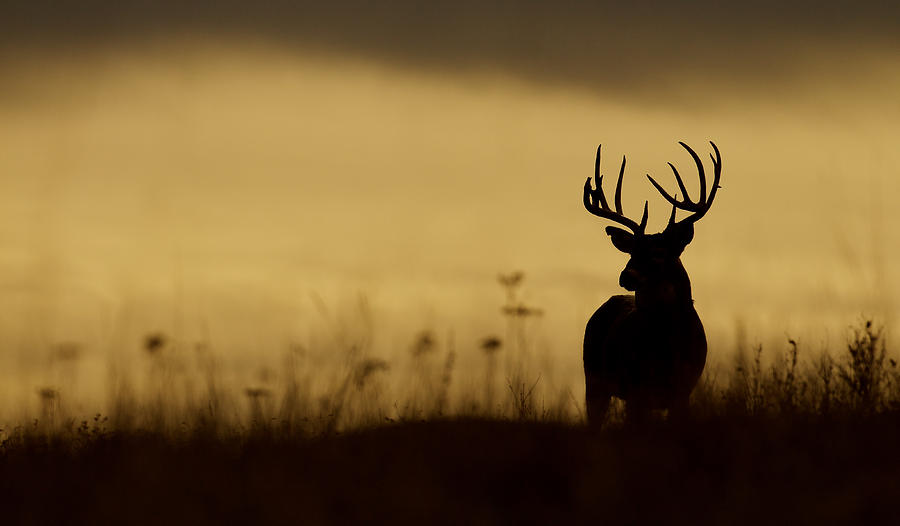“Long-range hunting is growing rapidly in popularity in Africa,” said Rassie Erasmus who owns a large hunting concession in Northern South Africa. “We offer a wide variety of bow hunts, yet we’ve had so many requests that I’ll also offer long-range hunts for 2019.”

Erasmus owns Rock Haven, a multi-thousand-acre ranch in the Limpopo Province that has a mountain run smack down the middle. As a result, he can spot game a mile away and offer hunting and shooting prospects as far as a hunter can ethically shoot. Hunters must demonstrate their shooting proficiency by “gonging” metal targets. Once proven, they can go after a variety of game animals.
The Guns of SCI
I’m at the Safari Club International Convention in Reno Nevada, where some of the most valuable firearms in the world are on display. Traditional African rifles are often in large caliber and frequently chambered side-by-side. Despite the cost and power, these rifles are designed for shots under 100 yards. However, rifle and ammo companies are also getting into the long-range movement. Here’s a quick look at how you can get in on one of shooting most popular trends.
Match Grade Ammo

Technological advances in cartridge production have enhanced the average shooter’s access to the best in accurate ammunition. Three years ago, Hornady used Dopler Radar to test their polymer tip ammunition and found that the extreme velocities were melting the tips and interfering with consistent accuracy. They were the first to discover this problem and fix it. Today, they offer several levels of match grade ammunition so that hunters can use the same ammunition as professional target shooters. Hornady developed the 6.5 Creedmoor cartridge in 2008 which is very popular for longer range hunting and more recently the 300 PRC in both Match and Precision Hunter lines. The 300 PRC delivers a 225-grain ELC-X bullet at 2356 fps at 400 yards with a drop of 19.5 inches, making it an ideal long range hunting round.
3 Steps to Long Range Hunting

“Long-range shooting is one of the most popular movements in the hunting and shooting industries. Nearly every scope and rifle manufacturer offers models needed for long-range accuracy,” says Jeremy Winters, shooting engineer for Gunwerks, a leader in shooting technologies as well as training programs for aspiring and veteran long-range shooters.
Gunwerks builds rifles, customizes scopes, and tests each for exceptional accuracy. Winters has the enviable job of testing each firearm before it’s shipped. “I estimate that I fired more than 62,000 round last year and no rifle is delivered until I’m convinced it’s up to our elevated standards,” he says proudly.
How Far is Long-Range
Winters considers any range beyond a scope’s zero as “long-range,” a definition that may be surprising. “If you zero your gun at 100 yards and you shoot at an animal at 300, that’s long-range in my book,” Winters says. “Any distance beyond point-of-aim requires adjustments for elevation and windage.”
Winters is also quick to point out that long-range shooting precedes long-range hunting. It’s one thing to challenge a paper target at 400 yards, but an entirely different ethical matter if the target has a heartbeat. Long-range shooting requires a skill set that must be mastered on the bench before heading to the woods or mountains, he insists.
LRU- Long Range University

Winters lauds the three-phase shooting schools offered by Gunwerks that are offered in three levels. Level 1, called “Solid Foundations” is exactly that- the fundamental knowledge that hunters and shooters need to succeed.
“Most new fans of long-range want to buy equipment first, yet that’s not the best approach,” Winters says. “Long-range skills are unique to each individual and circumstance such that you first need to know your goals before buying gear. By completing the one-day course, you’ll come away with an understanding of the fundamentals of marksmanship and you’ll have a handful of helpful drills in your pocket to keep your foundation solid even after you leave.”
Step Two- Skill Development
Building on the foundation of Level 1, now you will learn the more technical aspects of long-range shooting systems- internal and external ballistics, the effects of wind, and how varying terrains affect your bullet.
This is the stage to buy equipment including a rifle, scope, select a caliber that meets your shooting/ hunting goals, and acquire ammunition for upmost accuracy. Although Gunwerks builds rifles, scopes, and other technical gear, you are welcome to make your selection from a wide variety of products available from other vendors.
Step Three- Real World Application

“You bring your own gear for this level,” Winters says. “Although we do most of our training at our Wyoming facility, we have ranches in the East and West that will provide the kind of hunting challenge you need. We’ll put you on top of a mountain and have you shoot into a valley and in a valley and shooting high on a mountain. This is real-world training and you’ll have a chance to test your skills on a wide variety of targets, distances, and terrain. “
Winters believes that this three-step program will build the foundation for successful long-range hunting and shooting. “Shots down range will keep your skills sharp and maintain a lifetime of success,” he says. When presented with an unexpected hunting situation, your training will create success. Like shooting free-throws on the basketball court- once you develop the skill, you don’t think about the mechanics, just listen for the ‘swish.’Just head to our website to sign up.”



















![The Best Deer Camp Chili [VIDEO] Deer Chili Ingredients, Tomatoes, Chili Spices](/wp-content/uploads/2015/10/Deer-Chili-Deer-Camp-Recipe-218x150.jpg)
![How to Call Elk Early in the Season [VIDEO]](/wp-content/uploads/2016/08/byers003-218x150.jpg)




![Idiots Disturb Hunter: How Would You Have Handled It? [VIDEO]](/wp-content/uploads/2015/10/DSC00110-e1474487693878-100x70.jpg)
![Albino Buck Shocked to Shed His Antlers [VIDEO]](/wp-content/uploads/2015/10/AlbinoDeer-100x70.jpg)